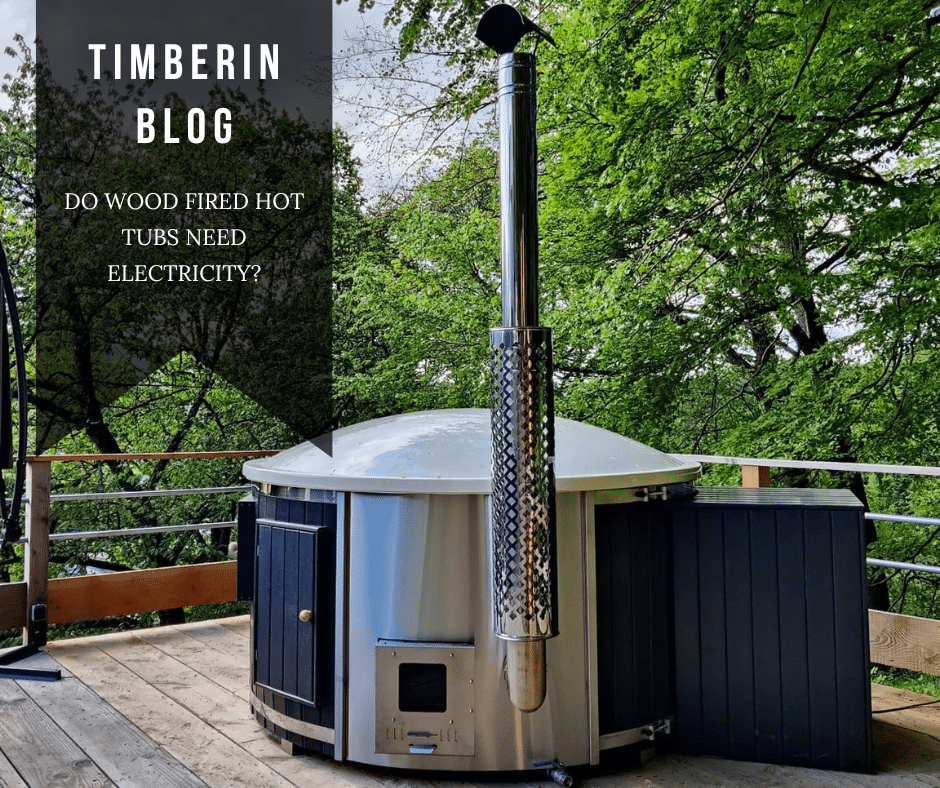Wood-fired hot tubs offer a rustic, natural soak with crackling fire ambience. But do they need electricity to run? Below, we explain how wood-burning tubs work, when (and why) power may be required, and easy ways to get the most from an off-grid setup—plus helpful links to related guides across our blog.
Wood-Fired Hot Tubs: An Overview
Also called wood-burning hot tubs, these models are typically built from durable, high-quality timber. Unlike electric or gas spas, wood-fired tubs heat water with a real fire for a traditional, eco-minded experience. If you’re comparing stove types and layouts, see our overview of hot tub heating options.
Do Wood-Fired Hot Tubs Need Electricity?
No—wood-fired hot tubs do not require electricity to heat water. The fire provides the heat, so you can enjoy a warm soak even off-grid or during power cuts. Power is only needed if you add accessories such as a filtration system, massage jets, or LED lighting.
Because there’s no thermostat controlling a stove, wood-fired hot tubs are hands-on: you manage the fire and check the temperature. If you prefer greener habits while you heat, browse our eco-friendly hot tub tips.
How Do Wood-Fired Hot Tubs Work?
Wood-fired tubs use a simple, effective setup: a wood stove/burner with a chimney and a water circulation path. The stove sits outside the tub and connects via pipe/hoses. Light the fire and let it burn until the water reaches your preferred temperature; heat transfers as water circulates through the system for a soothing, natural soak.
Advantages of Wood-Fired Hot Tubs
- Environmentally friendly: Use a renewable, natural fuel source.
- Lower operating costs: Wood is generally cheaper than electricity or gas.
- Timeless aesthetics: The rustic look elevates your outdoor space.
Conclusion
Wood-fired hot tubs don’t need electricity for heating—only for optional add-ons like filtration, massage, or LEDs. If you enjoy a traditional, hands-on experience with low running costs and natural ambience, a wood-burning spa is a great fit for your garden.
HowTo: Heat & Enjoy a Wood-Fired Hot Tub Without Electricity
- Prepare the tub: Ensure the stove connections are in place and the tub is clean.
- Fill with water: Fill to the recommended level before lighting any fire.
- Build the fire: Start a controlled fire in the wood stove and let it establish.
- Monitor the temperature: Check water regularly and regulate the fire to reach your preferred warmth.
- Maintain heat: Add wood as needed to hold temperature during your soak.
- After use: Let the fire die down safely and close up the system once cool.
Need power for add-ons (filtration, LEDs, massage)? Plan outlets and placement.
FAQ: Wood-Fired Hot Tubs & Electricity
Do wood-fired hot tubs need electricity?
No. The fire provides the heat. Electricity is only needed for optional accessories like filtration, massage systems, or LED lighting.
Can I run a wood-fired tub completely off-grid?
Yes—if you don’t add powered features. Heating is wood-only, so you can soak even during outages.
How do I control the temperature without a thermostat?
Manually manage the fire: add wood gradually and check water temperature until it’s comfortable.
Where does the stove sit?
Outside the tub, connected by pipe/hoses. Heat transfers as water circulates for consistent warming.
What should I plan if I want filtration or lights later?
Include suitable power and placement from the start.

